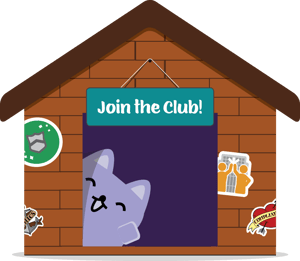
Yes, you can actually be "done" with compliance training—here's how.
Do you ever feel like managing corporate compliance training is an impossible, never-ending task?
You work hard, but it never seems to be good enough.
There's always something new you have to do to stay fresh—funny videos, engaging games, mobile apps, augmented reality laser quizzes —all while fighting against a shrinking budget, pressure to minimize training time, and increasing calls to show that what you're doing delivers results.
And worst of all, you can't even find time to think about all that fancy stuff because it's hard enough to just keep things going.
After all, as soon as you train on a topic, you have to start planning to train on it again. You have to keep refreshing and reminding people, and so your workload keeps expanding as more and more gets added to your plate, all while your business is asking for less and less.
It's no wonder why you feel stressed out.
But what if I told you there's another way?
A way where you can set up your training so that it runs itself—so that you can be done with training on a topic, make progress on hitting more topics, and measure that it all works.
It's possible. It just requires you to think a little differently about what you're doing and why.
Let me frame this up with an analogy.
Think "road sign," not "SCORM module."
Let's pretend that instead of corporate compliance, your job was training on road safety for your city. So you sit down with your city's safety experts and find out that the most dangerous thing people are doing is smashing into each other at certain intersections.
Which of these two methods makes more sense?
Method #1:
- Assign everyone in your city a SCORM-compliant, interactive, e-learning module about road safety. Tell them that when they get to one of the dangerous intersections, they need to stop and take turns going through it.
- Create a bunch of funny videos that show the intersections, give multiple scenario-based examples with catchy songs, and have a quiz at the end to measure what people learned.
- Hire a marketing firm to build an awareness campaign around the e-learning course to make road safety engaging.
- Hold a road safety awareness week where people can have a virtual reality experience that simulates how dangerous it is if they don't stop at those intersections.
- Repeat every year, varying the content and adding more media, to keep the training fresh.
Method #2:
- Put stop signs at the intersections.
- Go sit down with the road safety expert and move on to the next-most-dangerous thing.
If you said Method #2, you’re right.
(And if you said Method #1, you probably sell compliance training.)
Let's break this down.
The problem isn't retention.
Traditional compliance training looks like Method #1, and if you follow that method you will never be done with compliance training.
As soon as you do it, you have to plan for the next cycle of training on the exact same thing—which means that you can never make progress, because you have to keep doing the same stuff over and over again in slightly different ways (to keep it "fresh").
And this is because traditional compliance training is trying to solve the wrong problem.
That is, traditional compliance training defines the problem as “people need to comprehend and retain this information.” In our analogy, that means it defines the problem as "we need everyone to memorize which intersections to stop at."
As a result, it uses all kinds of gimmicks to try and get people to memorize stuff: quizzes, video, virtual reality, puppet shows, etc.—all of which are a waste because that's not the right problem.
The problem is behavior.
That's right: the problem is "people need to do this thing (whatever it is) the right way." And in a lot of ways, that's much simpler.
In our analogy, for example, that means the problem is "we need people to stop at these specific intersections." And while we could certainly try to make them memorize those intersections, it's much easier to just put up stop signs.
That is, when you think of it this way, you sidestep the "retention" problem entirely by getting people the information they need at the moment they need it—so they don’t have to retain it.
And so, instead of getting bullied into buying the latest compliance training gimmick, you focus on the context and timing of how to get the training to people.
You work with your subject-matter experts to break down risks into behaviors, think hard about the context of when those behaviors happen, and then build reminders into your business processes so that employees get the guidance they need in real-time.
And then, once you set it up, you let your business processes do the work for you by delivering the reminders every time they occur, so you can move on to the next thing you need to train on.
You're actually done.
Think about timing and context, not format.
Now, these reminders might be as sophisticated as building a pop-up into a software workflow, or they might be as simple as putting up signs at an intersection (or, say, above a printer in your office).
Because under this method—which we're gonna call the Broadcat Method from here on out—it doesn't matter how fancy or expensive or long your training content is. Instead, the focus is on timing and context.
In fact, under the Broadcat Method, simpler is usually better.
Think, after all, about what would happen if you replaced all the stop signs in your city with interactive video screens that delivered trackable e-learning modules, complete with scenario-based videos and adaptive learning technology. It'd certainly be more "engaging" than a stop sign, but it would do nothing to actually fix the problem.
That is, our industry has focused heavily on format or modality as the way forward, which is why compliance training seems to get more complex and flashy every year—but all those videos and games and augmented reality whatsits are chasing the wrong goal.
Those are all framed as efforts to boost retention (or its even less helpful cousin, "engagement"), and that is not the problem. They're kinda like gold-plated toilets: shinier and more expensive, but they still do the same thing.
Instead, the focus needs to be on timing and context: how do you get the right guidance to the right person at the right time? Because once you figure that out, the training delivers itself...and you can move on.
And moreover, because you're now embedding your guidance right into your risky business processes, you can sync it up with your compliance monitoring of those exact same processes.
Which means you can measure that it works, and that tells you if you need to make any adjustments.
And that frees you from the drudgery of pushing out training after training, year after year, for the sake of promoting retention: once you set it up, it runs itself, and you're done until your compliance monitoring tells you otherwise.
What this looks like in practice.
OK, cool, Broadcat Method. Makes sense in theory, right?
But this isn't just theory: here's what we're doing on this right now.
- We're working with a Fortune 500 to embed training on invoice red flags into their finance workflow—the type of thing that would normally be fragmented across "anti-corruption" and "AML" and "fraud" training. Every time someone has an invoice to approve, they’ll get a reminder (and certification) that approving the invoice means they’ve checked it for red flags—and the opportunity to review training on what to look for if they need help.
- We're working with another Fortune 500 on embedding guidance on compliance risks triggered by travel into their booking workflow. Just like the above, employees will get the ability to see real-time guidance when they're about to do the risky thing—instead of having to piece it together from a bunch of e-learning modules that have to be delivered over and over again.
- And internally, we’ve built this into our design workflow. Every time our designers open up Adobe InDesign, they now get a pop-up that reminds them to keep our intellectual property clean and organized (so it doesn't get mixed up with stuff we don't own, which is a risk for us), and a link to our deep-dive guidance if they need a reminder on what to do.
So, yes: we're doing this with folks in the Fortune 500, and we're doing it internally for our startup with 6 people (and one dog). That's because doing this is not a function of size or resources: it's a function of wanting to get the job done and move on to the next thing.
And if you want really granular, illustrated advice on how to do it, well, read our book. We've glossed over a lot here, and that will walk you through the "how" in detail.
And of course, you can work with us too, because your time is valuable and it doesn't make sense for you to reinvent the wheel and try to recreate what has taken us years to get down.
Because we've spent years building design systems, breaking down risks into business process, and refining this approach, and now that we've got it down—well, we're aiming to wipe out the traditional way of doing things.



